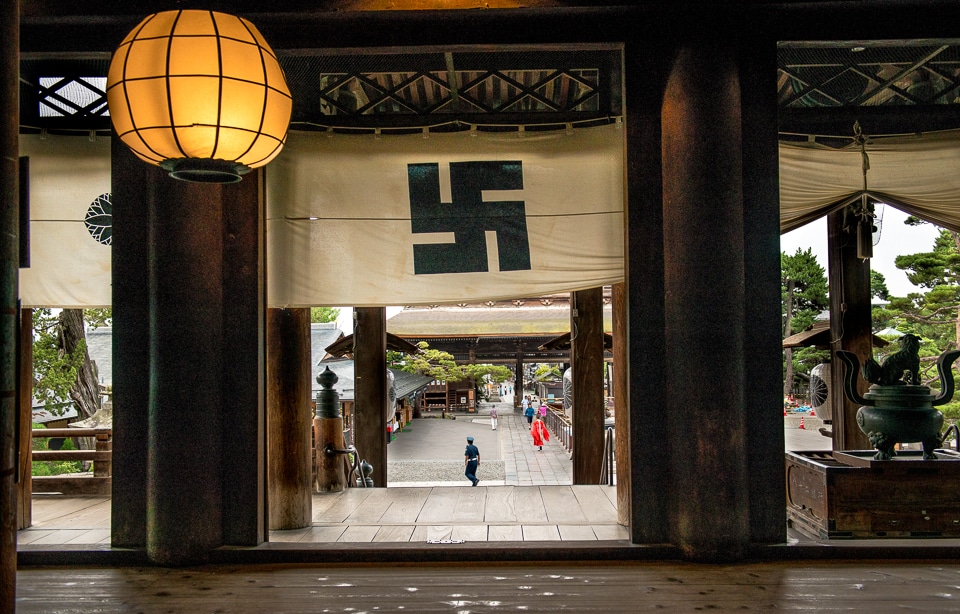
If you know your swastikas, and I have to admit learning a little about them when I studied Eastern religions in college, you know that, Nazis aside, they actually mean “It is good.” So, don't freak out when you see one on a Japanese temple. They've been around a lot longer than Japan's erstwhile ally of the mid 20th Century.
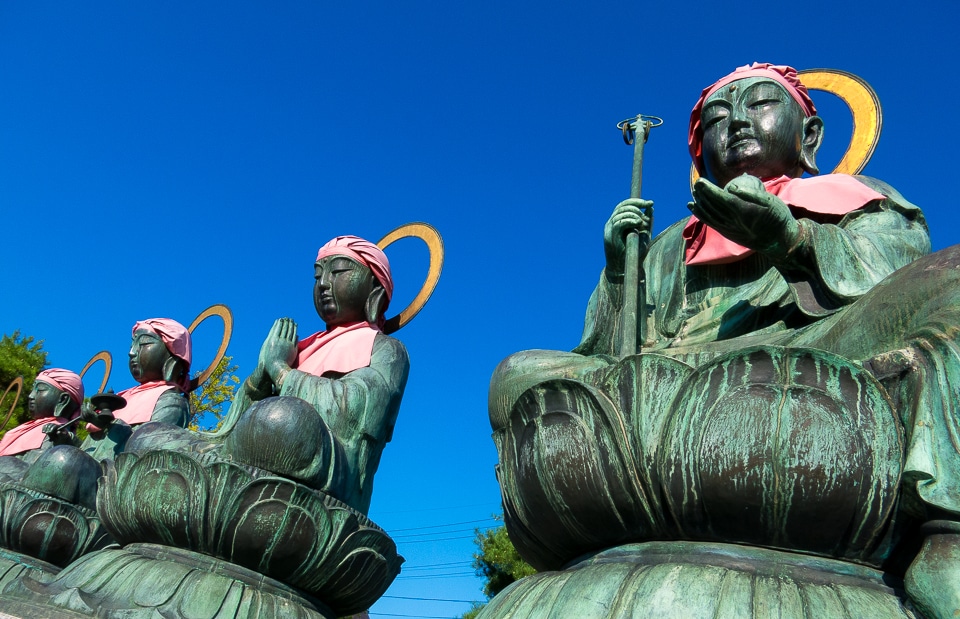
Outside the Zenkoji Temple is a line up of six Bodhisattvas seemingly welcoming you onto the temple grounds. One interpretation of the role of a Bodhisattva is that this is a person who has achieved Nirvana, but has willingly stayed behind in the illusory world of man to help the rest of us on the path. Very nice of them, don't you think?
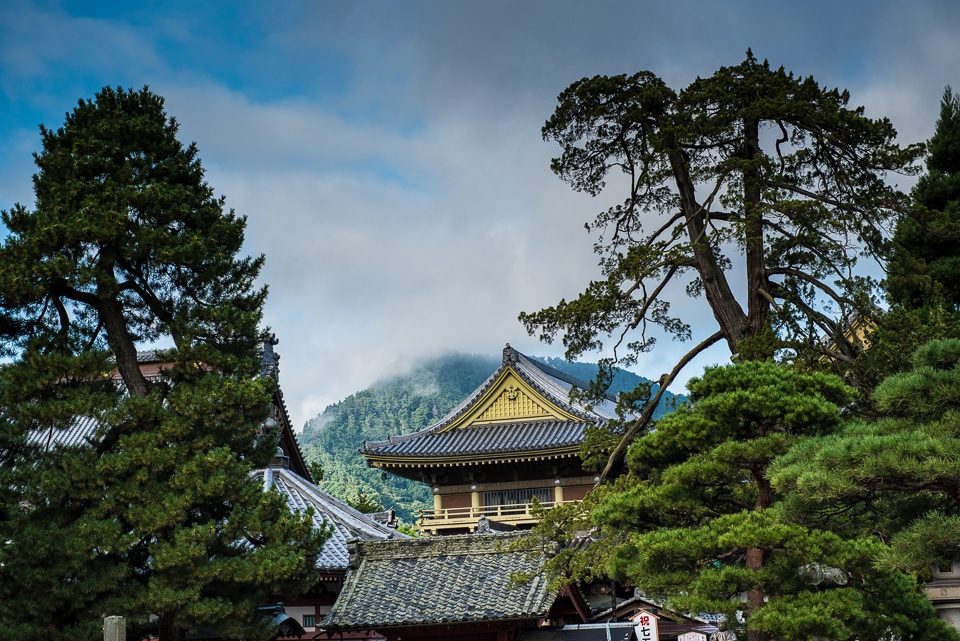
We got up at dawn to hear the monks' prayers in the Zenkoji Temple. The monks chanted for an hour, but near the end of the service, a higher pitched voice went solo for a few minutes. I thought it was a young boy, but Kris assured me it was a woman. Turns out, there is an Abbess at this temple. And she has a beautiful voice. And her home looks lovely in the early morning light.
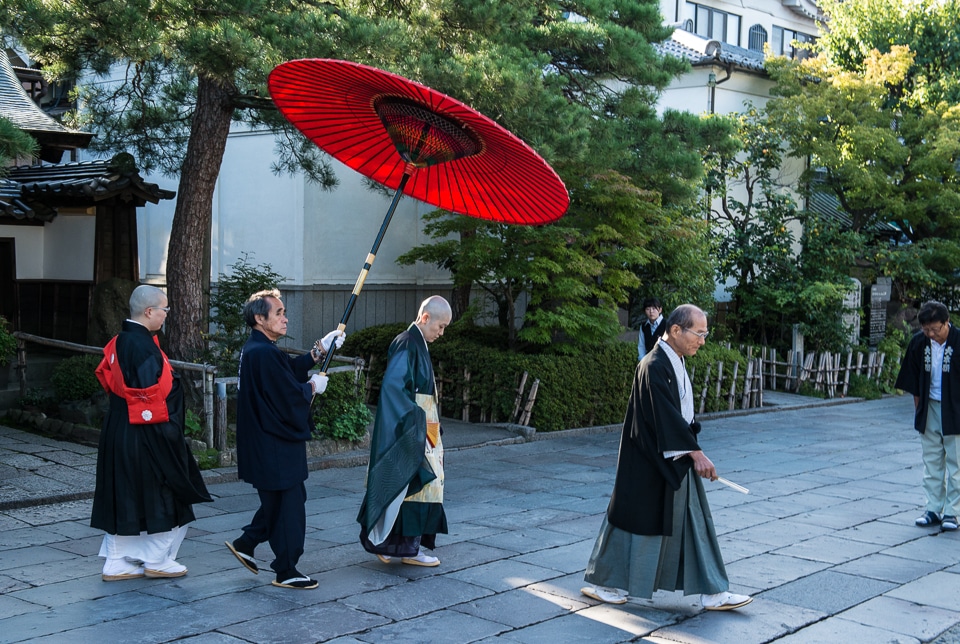
I also caught a shot of the Abbess herself on her way back to her residence after prayers, before the attendant policeman stopped me.
See posts about many other of our visits to historic Japanese sites in our list of UNESCO World Heritage Sites in Japan.
Up Your Travel Skills
Looking to book your next trip? Use these resources that are tried and tested by us. First, to get our best travel tips, sign up for our email newsletter. Then, be sure to start your reading with our Resources Page where we highlight all the great travel companies and products that we trust. Travel Accessories: Check out our list of all the accessories we carry to make getting there and being there a lot easier. Credit Cards: See our detailed post on how to choose the right travel rewards credit card for you. Flights: Start finding the very best flight deals by subscribing to Thrifty Traveler. Book your Hotel: Find the best prices on hotels with Booking.com. See all of the gear and books we like in one place on our Amazon shop.Got a comment on this post? Join the conversation on Facebook, Instagram, or Threads and share your thoughts!

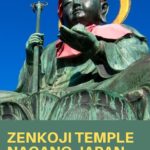

Comments are closed.